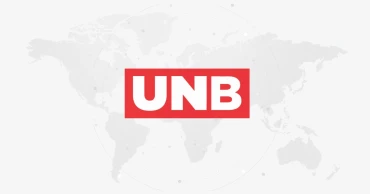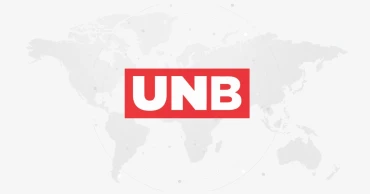2024-25 fiscal
Bangladesh govt aims to increase money supply over next two fiscals
The government of Bangladesh has fixed a target to increase the money supply to 16.5 percent from the existing 15.6 percent in the next two fiscals.
As per a government document, in the 2022-23 fiscal the rate of money supply is at 15.6 percent.
For the next 2023-24 fiscal the government has projected to increase the rate to 16 percent and for the 2024-25 fiscal it will be 16.5 percent.
Academically, the enhancement of money supply might increase inflation. This kind of target of ‘broad money’ growth would further invite inflation in the country.
Also read: Deposits at IBBL 'completely safe': Bangladesh Bank
"Broad money" – or M2 – is a calculation of the money supply that includes all components of "narrow money", such as cash and checking deposits, and also "near money" such as savings deposits, money market securities, and other time-related deposits.
M2 is a broader measure of money supply and is being closely watched as an indicator of money supply and future inflation, and as a target of central bank monetary policy.
If broad money exceeds nominal GDP growth, academically, commodity prices will take another steep jump, leaving limited-income consumers and the poor to bear the brunt of the increasing squeeze on the cost of living.
In 2020-21 fiscal year the money supply was 13.6 percent.
ReadMore: Bangladesh seeks zero tariff on apparel exports to US at 6th TICFA meeting
In the 2021-22 fiscal the proposed money supply rate was 13.8 percent, but the revised rate was 15 percent.
It was increased because of the government stimulus packages to inject money in various sectors to run their activities for offsetting the impact of COVID-19 pandemic that stalled the economic activities of the whole world, as well as in Bangladesh.
Apart from the impact of COVID-19 pandemic, the Russia-Ukraine war, and sanctions and counter-sanctions caused another deadly impact on the world economy as world trade was seriously damaged due to this.
The prices of essential commodities, fuel oil and transportation costs increased heavily. Russia and Ukraine were one of the main sources of Bangladesh for various essential items, like wheat.
Read More: Nagad is a Digital Bangladesh success story: Mustafa Jabbar
As a result, the people of the country have to spend more money in purchasing their day to day essential items.
To lessen the burden of fixed income group, low income group and lower middle income group people, the government has taken various types of steps.
These include selling rice among 50 lakh families at the rate of Tk 15 per kg and providing special family cards to one crore people by which they will be able to procure essential commodities at fair price.
3 years ago
Govt aims to bring budget deficit back within 5% by FY25
The government of Bangladesh is projecting to rein in the budget deficit back within 5 percent of GDP by 2024-25 fiscal from the current 5.5 percent.
The budget deficit for 2023-24 fiscal has been projected at 5.1 percent, according to an official budget document.
The revised deficit in fiscal 2021-22 was 5.1 percent. The deficit for 2020-21 fiscal was 3.7 percent.
The current deficit remains higher than the norm prior to the outbreak of the Covid-19 pandemic: the deficit averaged 3.5% of GDP in FY15-FY19.
Read more: ADB provides assurances of $2 billion in budget support
According to the document, the size of the country’s GDP for the running 2022-23 fiscal is Tk44,49,959 crore.
It will be Tk 49,91,337 crore for the next 2023-24 fiscal while Tk 56,06,269 crore for 2024-25 fiscal.
The document said that to mitigate the budget deficit the government will bank on the internal resources.
In the running 2022-23 fiscal 3.3 percent of the GDP will come from the internal resources and 2.4 percent of the GDP will come from the banking sector.
Read more: Budget’s highest priority is to tame inflation: PM
The external financing will contribute some 2.2 percent of the GDP in the running fiscal, as per the document.
For the 2023-24 fiscal 2.9 percent of the GDP will come from the internal resources and 2.3 percent of the GDP will be from the banking sector.
The external financing will contribute some 2.2 percent of the GDP in the current fiscal.
For 2024-25 fiscal 2.8 percent of the GDP will come from the internal resources and 2.3 percent of the GDP will come from the banking sector.
Read more: Food production, price control should get prioritised in budget: Dr. Debapriya
The external financing will contribute some 2.3 percent of the GDP in the running fiscal, as per the document, which says the economic activities of the country suffered a serious setback from March 2020 due to the spread of Coronavirus.
While the economy was turning around the time of the Russia-Ukraine war, the sanctions and counter-sanctions caused another blow to the recovery as the world economy stared at another recession.
The document mentioned that a potentially huge global supply-side shock may reduce growth and push up inflation, affecting the post-COVID-19 recovery.
Russia’s invasion of Ukraine and the economic sanctions on Russia that followed put global energy supplies at risk.
Read More: Govt struggles to lift tax-GDP ratio to double digits
It mentioned that Russia supplies around 10 percent of the world’s energy, including 17 percent of its natural gas and 12 percent of its oil.
The jump in oil and gas prices will add to industry costs and reduce consumers’ real income.
Record inflation is currently evident in a number of countries, including Bangladesh.
Twelve-month average inflation in the country was 5.6 percent for FY21. Considering the inflation scenario of trade partners, inflation projection for FY22 is as high as 5.8 percent and 5.6 percent for FY23.
Read More:IMF suggests updating GDP report every 3 months
On the other hand, the point-to-point inflation rate in Bangladesh is moving higher to 6.29 percent on March 22 which was 5.56 percent in the previous year.
3 years ago



